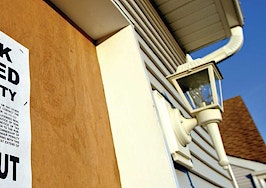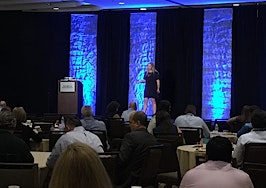- Real estate professionals can add value to their city by providing important resources stemming from their expertise.
- Broker Phil Greely's SeattleSchoolGuide.com gives parents what they need to know beyond school ratings and serves as a lead generator.
Phil Greely, a real estate broker at Realogics Sotheby’s International Realty in Seattle, understands better than most real estate salespeople that school ratings don’t give a complete picture of any school.
“I was going to be a high school teacher before I got into real estate; I have my master’s in teaching from the University of Washington,” he explained. “So the internet in general and websites like greatschools.com were becoming more prevalent, and it was pretty clear that anything that was online to evaluate a school was based on raw data, which typically translated into standardized test scores.”
When Greely switched brokerages in September and had to think about building a new website for his real estate business, he decided to build a school guide. SeattleSchoolGuide.com was launched in June, and it’s Greely’s attempt to give people moving to or around Seattle a more thoughtful, thorough approach to the schools.
Its school pages give parents not only median income and home values in the school district, but also information about how much recess and lunch time kids get every day, and how many parents think the school is responsive to their input and concerns.
What do parents want to know, and how can you find it?
Greely didn’t initially intend to build SeattleSchoolGuide.com per se — he originally thought about wrapping it into a real estate website about his business.
“I was looking for something of value I could offer the community,” he said. “I never have taught personally, but I went through that training and had experienced that conundrum of how to figure out what’s a good fit for your kid, so I decided I wanted to do a school guide portion on my new website — and as I got into it, I decided it needed its own URL.”
He says that if his clients have kids or are thinking about having kids, “the school situation for the neighborhood comes up, and people often ask me, ‘Is this a good school?'” When his clients don’t ask him directly, they’re looking on school ratings websites to make that determination — and the ratings websites don’t include all the information that parents want to know (for example: how parents, children and staff feel about the school).
First Greely needed to figure out what information to include. “I started by polling my friends on Facebook: ‘Hey, for any parents or aspiring parents, what did you ask your school or what do you wish you’d asked your school — or what would you want to ask your potential school about your community?’
“I got all sorts of answers,” he added, and says the top two were:
- How much outdoor or recess time do younger kids get?
- How much time do kids get to eat for lunch?
That’s information a school will typically give you — but it’s not listed on the website; you have to call them to ask. Greely got help from a research assistant who emailed the schools and then followed up with phone calls if she didn’t hear back from them.
Another source was the Seattle School District’s School Climate Surveys. Conducted every spring and released in the fall, the district puts the results on a portal so anyone can access them. This is where Greely found data about whether school staff think that the school has a plan in place to help struggling students, whether parents feel that the school is responsive to their needs and how safe the students feel at the school.
One challenge was trying to compare apples to apples for each school — sometimes they could find the information they needed in the climate survey, but sometimes they needed to make a phone call and ask.
“Going forward, we’re going to add more districts,” Greely noted, and the fact that the site is live now gives him and his website team “proof that we’re not creepy people asking weird questions” when they do have to reach out to schools for data.
Putting it all together
Greely has organized the site with a home page that explains how the search works, step-by-step.
There are a few ways consumers can search the guide: They can select a specific neighborhood or address (and keep any schools searched within a two-mile radius) or leave the search open to the whole city. They can specify whether they’re looking for an elementary, middle or high school — or a K-through-8 arrangement — median home price or school district.
On each school page, visitors can check a star to add the school to a comparison report that Greely sends them upon request; they can compare up to five schools.
Greely also has an email capture form set up for the “send your kids to this school” links on the website — often the school in question has residency requirements, so it’s a seamless way for him to start the home sales conversation with the prospect.
The lead magnet
There’s also a PDF download — linked to another email capture form — that Greely offers to visitors on the home page. It’s a list of questions for parents to ask a prospective school before enrolling their child, written by one of Greely’s friends, who also happens to be an instructional coach and professional development specialist in one of Seattle’s school districts.
“He’s basically a trainer of teachers within the district,” Greely explained. “He sees a lot of marginalized families, families on the fringe that struggle to connect in an American school, so I loved his perspective on that.
“My observation is that especially in a city like Seattle, where real estate is expensive and there’s not much of it to go around right now, people are finding a house that can potentially work and then sort of double-checking that the school isn’t rated a ‘1’ and then going for it,” he added. “Even if you’re talking to a possible pre-school, you want to go as deep as you can before you commit.”
The list includes questions like:
- What does the school do to welcome all students?
- How long has the principal been the principal at the school?
- What are some current examples of how the principal and the teachers are working together to create the best school possible?
- If we say we are an inclusive community — and most schools do — then what does that look like for all families?
- What are a few examples of grade-level units and projects that students do in math, science and social studies?
It also explains to parents how schools might typically answer these questions and how they can dig a little bit deeper into what their kids will be doing at the school and what it will be like for them.
What’s next?
Greely says the next plan is to add private school information to the website, and he’s also got pages set up for future school district reports.
The ultimate goal is to help parents get a well-rounded view of the schools in Seattle. “Schools might have a bad rating on one of the major websites,” Greely noted, “but there’s good stuff going on at those schools, and it might be a good fit for a family even if it’s in a neighborhood with lower home values.
“There are great teachers and great administrators everywhere,” he added. “The goal is to add to the content some bright spots — whether that’s interviews with the principal, video overviews of the school — trying to highlight the great stuff going on at each school.”












